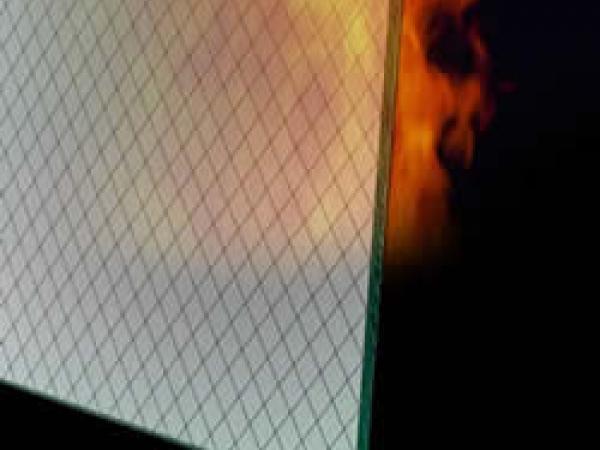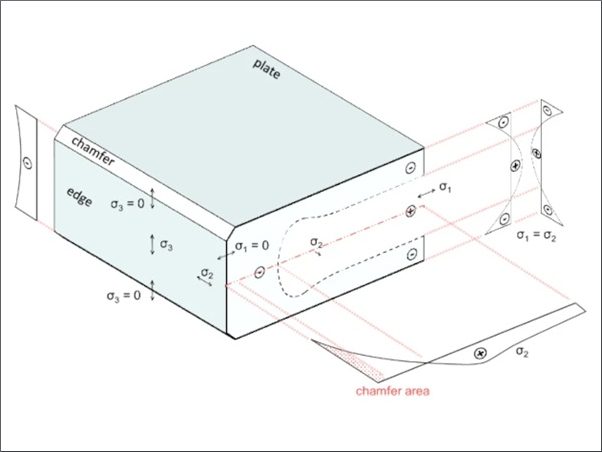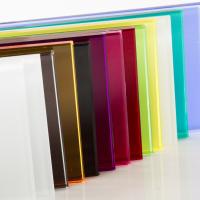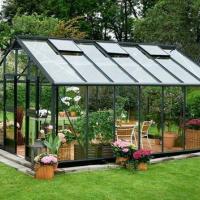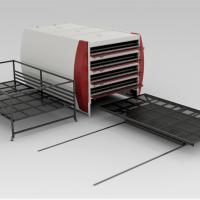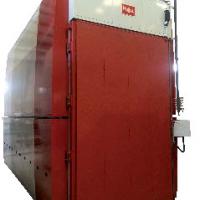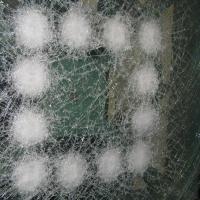Obviously, glass can't extinguish a fire or warn a building's occupants that there's any danger. But fire-rated glass can help keep flames and smoke from spreading from one room to another. The official term for this is compartmentation, and it means that glass can play a vital role in restricting fire damage to a limited area.
To the casual observer, it would seem that any glass could do that. After all, fire-rated glass looks deceptively similar to its non-rated counterparts. However, in reality, most glass offers little, if any, fire protection. For instance, standard window glass will break when the temperature reaches approximately 250° F.
Tempered glass can last until about 500°F. In contrast, fire-rated glass can typically survive heat in excess of 1600° F. That's a marked difference in performance. With structural fires capable of reaching extremely high temperatures very quickly, the need for this specialty glass is easy to recognize.
To earn its stripes, fire-rated glass must pass a battery of tests established by national test standards. Independent laboratories (such as U.L.) run the tests, then assign an appropriate rating based on the results.
The ratings are time increments, reflecting the duration of testing the product endured. That duration is intended to correspond to the length of time the glass should be expected to perform reliably in a fire. So if a product has a 45 minute rating, theoretically you could count on it containing flames and smoke for the first 45 minutes of a fire.
The testing is conducted in two parts. First, several pieces of the glass are installed in the wall of a large furnace. The wall might contain doors, sidelites, transoms, windows, etc. Following a strict time/temperature curve, the heat in the furnace is raised to an intense level, simulating conditions in a burning building. In order to successfully pass the test, the glass must remain in the frame. Cracking is allowed, provided the glass can still act as a barrier to flames and smoke.
Assuming the glass survived that portion of the test, there is a second phase required in the U.S. for a rating of 45 minutes or more. This is called the hose stream test, and it demonstrates the ability of the glass to withstand what is know as thermal shock. A fire hose with a high pressure nozzle is brought in to douse the hot glass with water at a pressure of at least 30 psi.
Most glass cannot tolerate the stress of having one area hot and the other cool at the same time, and so it will shatter. If sprinklers come on during a fire, or if fire fighters arrive with extinguishers and hoses, it is quite possible for hot glass to be exposed to water. The last thing anyone would want at that point would be for the glass to vacate an opening, leaving room for the flames and smoke to spread. The hose stream test thus tests the integrity of the glass, framing system, and surrounding materials.
Once a product has completed the rigorous test process, it is assigned a fire rating. Ratings generally run anywhere from 20 minutes to 3 hours. Building codes then dictate where those differently rated products would be allowed in a building. In general, the codes are designed to take into account how long it will take people to exit a building in the event of a fire.
As you might suspect, many of the locations (such as doors and sidelites) requiring fire-rated glass are also locations where impact safety is a concern. This used to pose a real dilemma, because product options were very limited. None of the glass that had high impact ratings could pass the fire tests, and the fire-rated glass (typically wired glass) wasn't strong enough for more than the minimum impact testing. So there often had to be a compromise. Today, however, there are several wireless glass products available that offer high levels of both fire and impact safety.
Impact ratings indicate what can be expected if someone (or something) runs into the glass. To test for impact, a 100 lb. bag of lead shot is dropped against a vertical piece of glass. The bag is raised to various heights for the different ratings to approximate the impact of individuals coming in contact with the glass. Afterwards, the breakage pattern of the glass is closely examined to determine whether or not it would be considered a hazard.
If you see a piece of wired glass with a label that says ANSI Z97.1, that means the glass has been tested to withstand 100 ft./lb., similar to impact of a small child. On the other hand, glass labeled as meeting CPSC 16CFR1201 (Category II) withstands 400 ft./lb. That is similar to the impact of a fast moving, full-grown adult.
When you multiply the number of fire ratings with the different safety ratings, you can see that the possible combinations are impressive. But ratings alone do not distinguish the various types of fire-rated glass on the market today. Each product has its own unique characteristics, making the decision process even more complex.
Despite all the variety, the field can be organized in a fairly simple and logical way. All fire-rated glazing falls into the following four primary categories:
Polished Wired Glass is far and away the most well known product in the industry. Used for more than a century, it has a solid track record. Most codes were originally written around wired glass, because for many years it was the only glass that could pass the fire testing. Wired glass is able to pass the hose stream test, and has earned a 45 minute rating (even higher in very small door sizes). Code and fire officials have been able to instantly recognize the wire mesh as a sign that glass was fire-rated.
In some instances, however, that same wire mesh has presented an undesirable "institutional" image. And occasionally, people have mistakenly assumed that the wire mesh makes the glass more impact resistant. Truth be told, wired glass is a relatively weak glass that only meets minimal 100 ft./lb. impact standards. With that in mind, even though wired glass is readily available and easily affordable, great care should be taken if it is installed in areas where impact safety is a concern, such as schools and other high traffic areas. Some schools, with liability issues in mind, use high impact fire-rated glass - even if initial costs are higher.
Ceramic Glass is a category of fire-rated glazing that has entered the market during the past 12 years. Ceramic has long been known for its amazing ability to withstand heat and thermal shock. That's why today you can find ceramic in everything from cooktops to car engines. Once the technology was developed to form a clear product out of ceramic, it didn't take long to see the potential for its use as a fire-rated glass.
Transparent and wireless, ceramic glass offers a distinct aesthetic advantage. It comes in a range of make-ups that can provide many different characteristics: fire ratings up to 3 hours, high impact safety ratings, sound reduction, etc. It can also be beveled, etched or sandblasted without affecting the fire rating. It is even available in insulated glass unit (IGU) make-ups that comply with energy codes for use in exterior applications.
Specially Tempered Glass has become a popular alternative for low level fire safety. It is clear, wireless and has a fairly moderate initial investment. High impact ratings make it suitable for some door applications. However, it does have some serious drawbacks that are important to note.
Unlike other fire-rated glazing products, specially tempered glass doesn't pass the hose stream test. In an actual fire, if sprinklers activate nearby and even a small amount of water hits the hot glass, it will likely fall out of its frame - quite possibly within just a few minutes. That's why it has only been able to comply with standards for a 20 minute rating. Many times this type of material has been inappropriately substituted for wired glass or other higher performance fire-rated glass, when in fact it does not carry the same fire rating. If sprinklers are anywhere near the opening, this product should not be considered.
Transparent Wall Units make up the final category of fire-rated glass, and in reality, they are in a class by themselves. They are tested and classified as "walls," even though they are made of glass. Their claim to fame is their resistance to heat tranfer. Transparent wall units can actually block significant amounts of heat from transfering through the glass. A fire could be raging on one side and you could literally still place your hand on the other side of the glass. For areas such as stairwells where people could be trapped for long periods of time, or in sensitive computer areas, or where large expanses of glass are used, transparent wall panels serve a genuine need.
There are different kinds of these products on the market. Some are insulated units filled with a clear gel that turns to an opaque foam during a fire. Others are made of multiple layers of glass (similar to bullet resistant glass) with intumescent interlayers that turn opaque during a fire. Both styles of products have ratings of up to 2 hours, withstand the fire hose stream test and offer high impact safety ratings. Thanks to new framing that is now available, architects can incorporate these transparent wall and door units from floor to ceiling in their designs, and still offer 2 hour fire protection.
By Jerry Razwick, Technical Glass Products

